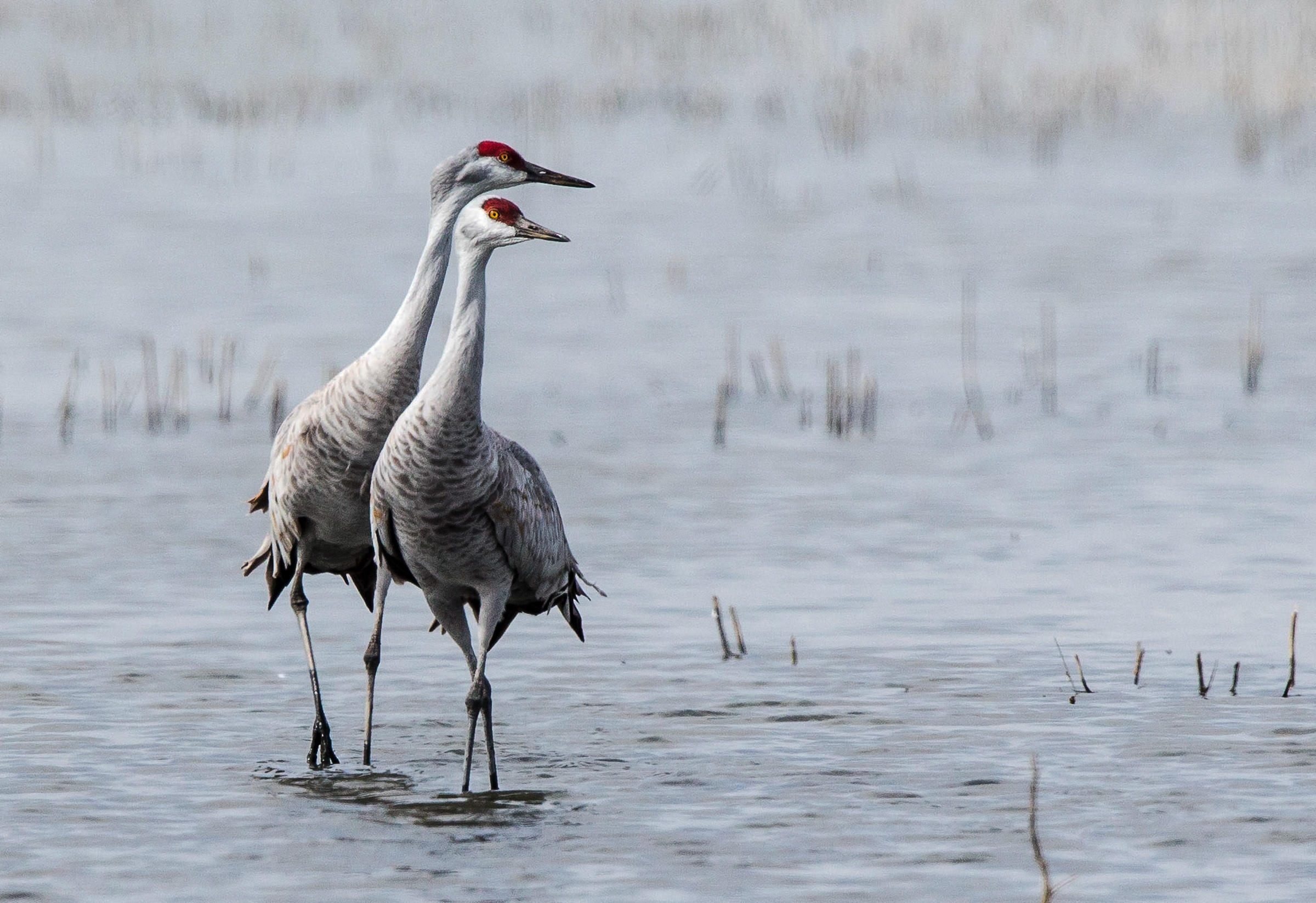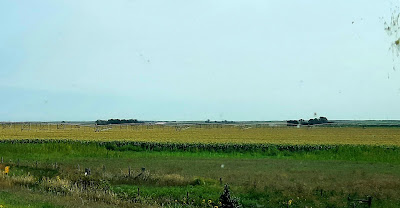Day 12 & 13: From Heartland to Home
Good morning travel buddies! I decided to post days 12 and 13 together since the theme is very similar. We are covering what is known as America's Heartland - Nebraska, Kansas and Oklahoma. Also called the breadbasket because of the sheer acreage devoted to cereal crops like wheat, corn, oats, barley and sorghum. Everything is lush, green and fertile. There is not a lot of variation in terrain as far as foothills or mountains, but there is a beauty in the crops that stretch on for mile after mile. (Reminder - farmland means bugs - bugs mean smudgy pictures.)
After getting a not very restful night's sleep at the Wyoming rest stop, we picked up and headed out. We stopped briefly at a travel center to grab a pre-packaged breakfast and truck stop coffee. Sustaining, but nothing to write home about. The Cub's each called us to check in, which was a very nice thing. They assured us they were tending home base and looked forward to our return.
After that it was pretty much hour after hour of I-80 Eastbound toward Nebraska. The terrain was slowly changing from tall, rolling foothills to the level plains of the Heartland. The only real excitement was the continual argument with "Jill" the Garmin girl about I-80. She was determined to route us every way other than the most direct. I know she meant well but always remember to take the directions from your GPS device with a grain of salt. To give her credit, the Interstate eastbound was techincally closed - ok, completely gone in some locations - but the traffic was rerouted as a single lane adjacent to the westbound traffic. Maybe she didn't get the memo?
Anyway, we did have to endure lots of traffic cones, barriers and signs on our route. I'm assuming that with the reduction in overall traffic due to COVID, coupled with regional maintenance and improvement projects, Wyoming decided to rip up the freeway and get some work done. It's pretty obvious they are not going to be done before the winter hits, and I've seen many reports about the snowdrifts and hazardous conditions that frequently shut down I-80 during the winter. Now there are large sections of I-80 that are down to one lane each direction. I can only imagine the impact this will have on the heavily used East/West truck route. (Even after nearly 3 years, it's hard to leave the logistics mindset behind!)
We stopped for a leg stretch at the Cabela's in Sidney, Nebraska. Sometimes you just need to take a break from the road. Papa Bear has done an amazing job of driving, keeping us safe and moving down the road. We've been respectful of the truckers, who have returned the courtesy, and we've only been flipped off by stupid passenger vehicles three times. Not too bad in my book. Anyway, we took advantage of their free dump station to empty the tanks, and then wandered through the store for about 45 minutes. I did end up buying a pair of boots, because when you find size 11's that are comfortable you buy them.
 |
| Canadian Geese at the Cabela's Pond |
We crossed into Nebraska and I was actually pleasantly surprised by the number of historic sites and interesting places there are to stop. Most of the ones we were interested in visiting were closer to our end-of-day destination and the timing was not going to work out. I definitely would like to come back at some time and visit the Classic Car Collection in Kearney, along with the Pioneer Village in Minden, and one of the several NASCAR sanctioned raceways.
 |
| Great Platte River Road Archway Monument |
If you are a nature lover, there is no lack of beautiful lakes for fishing, fields for hunting ducks and geese, and if you do your shooting with a camera, attending the annual Sandhill Crane Migration. The Rowe Sanctuary is at the center of the flyway for Sandhill Cranes and every year it is a big deal for birdwatchers to view these beautiful birds during their migration. Many people actually plan vacations around the migration, and the nearby towns offer plenty of accommodation, recreation and dining options for the visitors.
 |
| Picture courtesy of the National Audubon Society |
After about 425 miles of travel on Day 12, we reached our overnight destination. I'd actually had a hard time finding a camping spot, but was determined we were staying in a camp. We needed a good night's sleep, and I needed to do some housekeeping, all of which are not all that practical when you don't have full hookups. The park was not fancy, but easily accessible, and with our Good Sam discount a very reasonably priced option.
We got in right around 6:00 pm and set up for the evening. Papa Bear helped with cooking by manning the outdoor grill with the brats and onions. I took care of sweet potato fries and baked beans. I decided, last minute, to make a berry cobbler since the strawberries and blueberries that started our journey with us were looking nearly past their prime. They were perfect for the easy peasy dessert. After dinner, while the cobbler was cooling just a bit, we decided to combine an evening walk with a trip to the nearby Walmart to get some ice cream to go with the cobbler. The evening was cool and it made the walk very enjoyable.
We had to walk all the way around a field planted with what I ca only assume were soybeans. It was just about twilight when we started our walk and the sparrows and swallows were patrolling and divebombing moths, grasshoppers and other bugs that were moving in the field. On our way back, it was just after dark, and as we walked through the parking lot of a hotel adjacent to the field, the same birds had packed into 4 small ornamental trees for the night. They were raucously calling back and forth to one another as they too settled in for an evening's rest.
The remainder of the evening was uneventful. Papa Bear helped with kitchen clean up and dishes. Then we had dessert while watching tv. We discovered that we'd lost an hour after crossing back into Nebraska so it was midnight when we finally turned it.
Tut Tut - Looks Like Rain
- Concordia WWII POW Camp - built as a "model POW internment camp", 4000 German officers and enlisted soldiers were housed in this heartland facility, receiving not only humane treatment, but the opportunity to work and earn education through the University of Kansas. Many prisoners opted to work as farm hands during their internment and formed lasting relationships with the farmers. After the end of the war, all prisoners were returned to Germany, but many found their way back to Kansas to settle in the communities that they had grown to love.
- Orphan Train Museum - Also located in Concordia, Kansas there is a museum dedicated to the social program started by Charles Loring Brace that relocated over 250,000 orphaned, abandoned or homeless children from New York to mid-west farm families from 1854-1929. The intent was to provide them with homes, families and prospects of a better life.

















Comments
Post a Comment